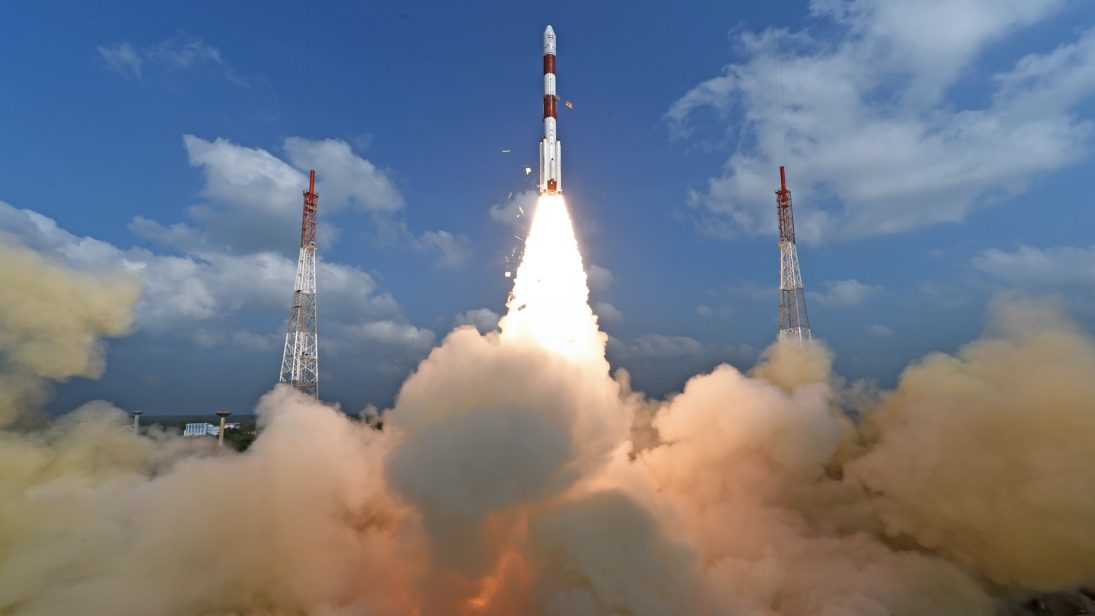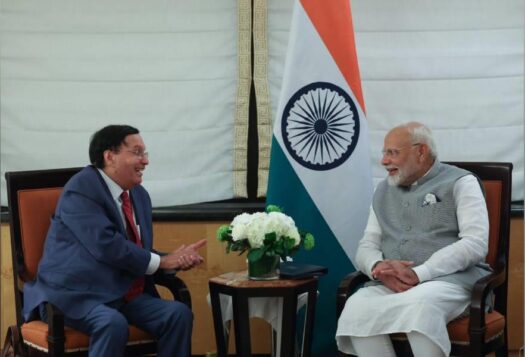
Last week, the Indian Space Research Organization (ISRO) attained a technological feat that would not have come as a surprise to those following India’s space program keenly. The workhorse of the ISRO, the Polar Satellite Launch Vehicle (PSLV-C37), launched a 714-kg Cartosat-2 Series satellite along with 103 co-passenger satellites from the Satish Dhawan Space Centre, Sriharikota. The technological capability demonstrated in the launch involved no major upgradation, since using satellites of smaller dimensions allowed the rocket to accommodate more number of satellites in a limited space. In fact, this had already been demonstrated successfully in an earlier launch of the PSLV-C34, which stationed 20 satellites in orbit. But placing 104 satellites into orbit further reaffirms that India has mastered a technology with potential military applications. This needs to be viewed in the context of an array of technological developments in the South Asian region.
Significance of Multiple Satellite Launches
It is noteworthy that India could launch 104 satellites in the desired orbits without disturbing the flights of others, and independently of each other. This is different from a container launch where multiple sub-satellites are staked together in one container and then the containers are released. The nature of many of these technological capabilities is dual-use, meaning that they have applications in the military realm as well—in this case, the ballistic missile segment. Specifically, this technology is a demonstration of potential MIRV (multiple independently targetable re-entry vehicle) capability, meaning that satellites can be replaced with warheads that can be delivered to target locations.
Assessment of India’s Progress against Technological Impediments
MIRVs are independently targetable. When combined with accurate missiles, MIRVs enable counterforce targeting focused on military targets. This capability requires ballistic missiles with long ranges, which can carry multiple warheads. Warheads are delivered to different targets along independent trajectories. Karthik Bommakanti writes that in order to have a potent MIRV capability, one needs to be able to develop re-startable Vernier rocket engine systems, integrate multiple nuclear warheads to the missile, be able to guide the warheads along independent trajectories with high accuracy, master atmospheric re-entry, and be able to miniaturize the warhead.
Notably, the fourth stage of PSLV is re-startable and with the PSLV-C37 launch, India has amply demonstrated its prowess in multi-payload integration techniques. The other aspect is developing highly reliable and precise inertial guidance technology. The requirements of delivering a nuclear warhead rather than a satellite are similar, but more demanding. A nuclear payload must be ejected in a very short duration and with an error margin that is much less than that of a satellite. On this front, India has not covered much ground, but this may be within its technological capability. The Defense Research and Development Organization (DRDO) has been working on re-entry vehicles for the Agni missiles. The last set of challenges lie with the warhead, where the reduction in size has a trade-off with the yield of the warhead unless there is some qualitative improvement in warhead design capabilities so that the yield-to-weight ratio increases. The DRDO, until 2013, had not developed a warhead below 500 kg. India’s capability to further miniaturize the warhead without compromising on the yield is unknown considering that there was a controversy about the yield of the Pokhran-2 thermonuclear test. Overall, more than the number of warheads and their yields, it is the accuracy with which they are delivered to their targets that determines kill rates.

Implications of PSLV-C37 Launch for Strategic Stability
It is evident that India has the technological wherewithal to have full-blown MIRV capability, but whether it should do so is another matter. India claims to maintain segregation between its nuclear weapons program and civilian space program, but developments in the civilian technology space must be carefully monitored for capabilities with potential military applications. Indeed, scholars have argued that in the past DRDO scientists working on India’s surface-to-surface and surface-to-air anti-tank missiles have benefited from the exchange of personnel and collaboration with their counterparts in the civilian space agency. With the caveat that exchange of personnel does not necessarily amount to a technology transfer, blurring the lines between these stakeholders once again could raise nonproliferation concerns in Washington and other foreign capitals as well as jeopardize nuclear commerce with the United States. MIRVing might jeopardize trade and diplomatic relations vital to India’s economic goals and global standing.
If one were to assess India’s doctrinal need of the MIRV technology, it is to outdo ballistic missile defense (BMD) shields in the region rather than compete with rivals. China is more a concern for India than Pakistan. China’s BMD ambitions may ultimately force India to deploy multiple-warhead missiles. Yet, it would be prudent for New Delhi to await specifics regarding China’s BMD program. Prudence can be paired with pragmatic steps to bolster its missile, and India has launched a dedicated military satellite GSAT-7, conducted a successful endo-atmospheric BMD test, and is planning to enhance the range of its hypersonic cruise missile Brahmos, which can carry a conventional warhead of 200 kg.
Not surprisingly, Pakistan has entered the fray with the test of Ababeel, a medium-range ballistic missile system, which claims to have MIRV capability aimed at defeating India’s nascent BMD system. The significance of the Ababeel test is not clear, however, in part because Pakistan lags behind its arch-rival in putting in place a host of network-centric and space warfare capabilities needed to complement MIRVed missiles, particularly if counterforce targeting strategies are envisioned.
Conclusion
Either way, the PSLV-C37 and Ababeel launches are the beginning of a prominent phase in the paradigm of deterrence stability in South Asia as progress in capabilities outruns the pace of stagnant confidence-building measures and resolution of key disputes.
***


